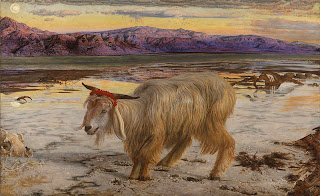The seeds of impressionism started in the early 1860’s by
Monet, he was trained in the academic manner but he broke away from traditions,
he was an important figure to bring about change in art. At that time Japan
opened there borders and began to influence Europe, Monet was mostly struck by
the Japanese prints. Monet was also known for his series, he used to paint the
same thing in different light he also used to prepare sketches from before. Impressionism began in France where a group
of friends which included Monet, Pissarro, Sisley and Degas. They exhibited
together in a studio of a photographer of the time named Nadar where a total of
eight exhibitions took place. Impressionists where interested in the play of
light on the object, at the time studies on light where being made which they responded
to, because of the light the impressionists painted en plein-air which means
that they needed to go outside to paint. Paintings were normally small to allow
completion on the spot. Impressionist artists made brush strokes visible and
where criticized for the unfinished look there paintings had. There subject matter centered on the life
around them which where landscapes, pastimes and chores. They where criticized
for meaningless paintings. Impressionism was strongly influenced by the
realists who had moved away from themes of academic art. They were also
strongly influenced by simple and bold Japanese wood block prints which had
bright colours, imprecise treatment of space and lack of modeling, one of the
most famous wood block prints is The Wave by Hakusai. Development in photography also influenced the
impressionists. Early photography had long exposures which meant having light
on both walls. Photography changed people’s lives in the 19 century. In 1839 the photograph was made public but
was 50 years in the making still the camera obscura and other drawing aids had existed
for several years.
Impressionists Paintings.
Impression Sunrise 1872- Claude Monet
The name was given by
a critique who said that the painting was just an impression of a sunrise. The brush strokes are rough and the colours
vivid showing the new style.
The flooding at port marly 1872 – Alfred Sisley
Sisley painted more than one canvas of the flooding, he painted the flood in an almost peaceful
way as if it was part of the town.
Portrait of Mary Cassatt - Edgar Degas, c.1880-c.1884
The Orchestra at the Opera House. c.1870- Edgar Degas
This was the time where photography was popular and at that
time it became commercial. At the time you had to pose for a photo and be very
rigid and serious for the photo to be clear but these photos were very un-artistic.
So portraits which were painted had to be different as photography would steal
away the business. They simplified what they saw and used short broken brush
strokes but they were still influenced by photography and did not fit
everything in their paintings making them change the composition in there
paintings.
Bibliography.
Analysis of Claude Monet’s Impression, Sunrise | Incite. 2013. Analysis of Claude Monet’s Impression, Sunrise | Incite. [ONLINE] Available at:http://blogs.longwood.edu/incite/2012/01/30/analysis-of-claude-monet%E2%80%99s-impression-sunrise/. [Accessed 09 April 2013].





































